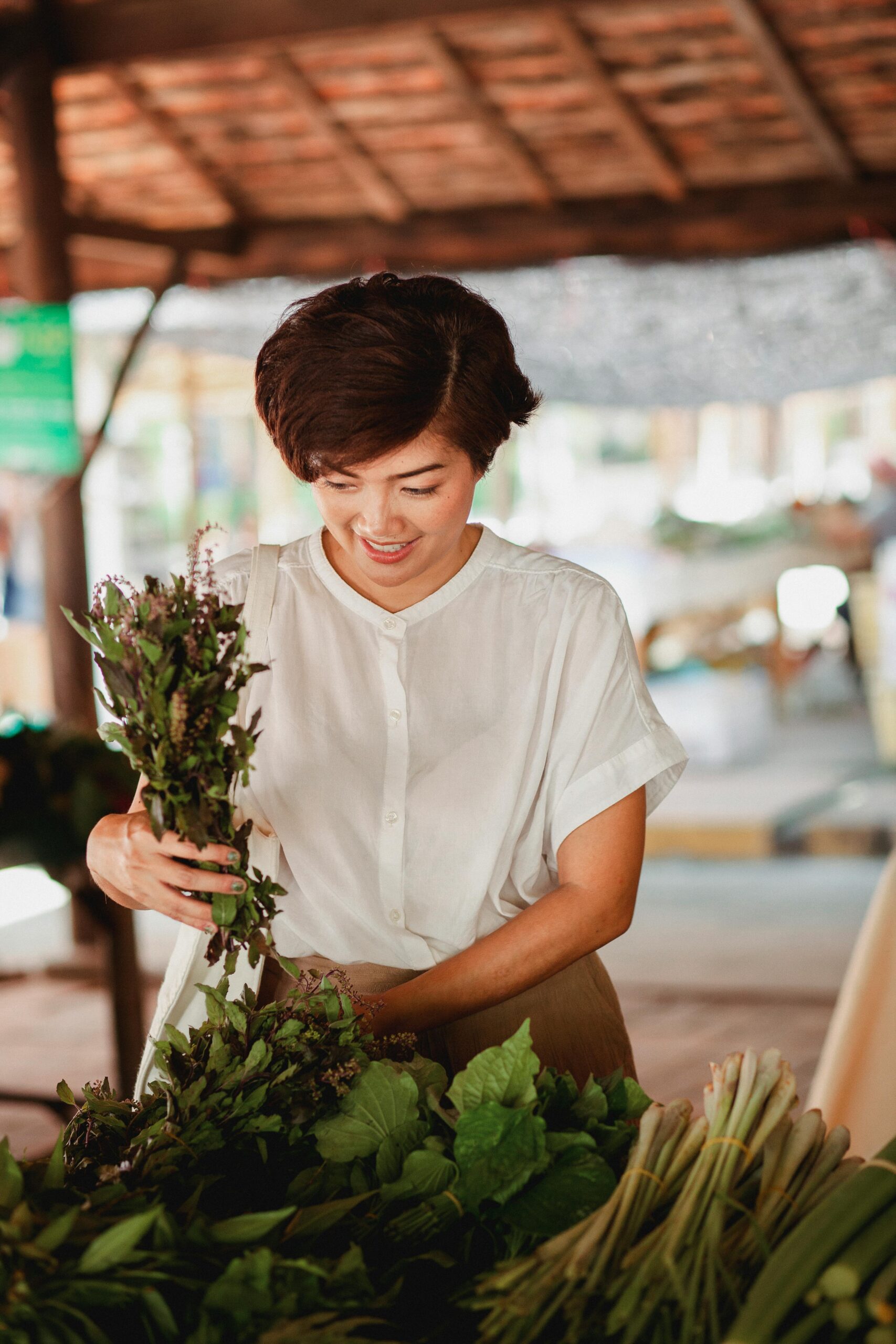Achieving glowing skin is a common desire, and nature offers a number of solutions. Ayurvedic herbs have been used for centuries to enhance skin health and promote a radiant complexion. Ayurvedic herb are always safe than chemical ingredients. Here are five powerful natural herbs that can help you achieve glowing skin.
Read more: Top 5 Ayurvedic herb for skin glow, 4th one is my favorite !!1. Neem : Ayurvedic herb
Neem, scientifically known as Azadirachta indica, is a fast-growing tree native to India and other parts of South Asia. Every part of the neem tree, from its leaves to its bark and seeds, is used in traditional medicine due to its powerful properties.
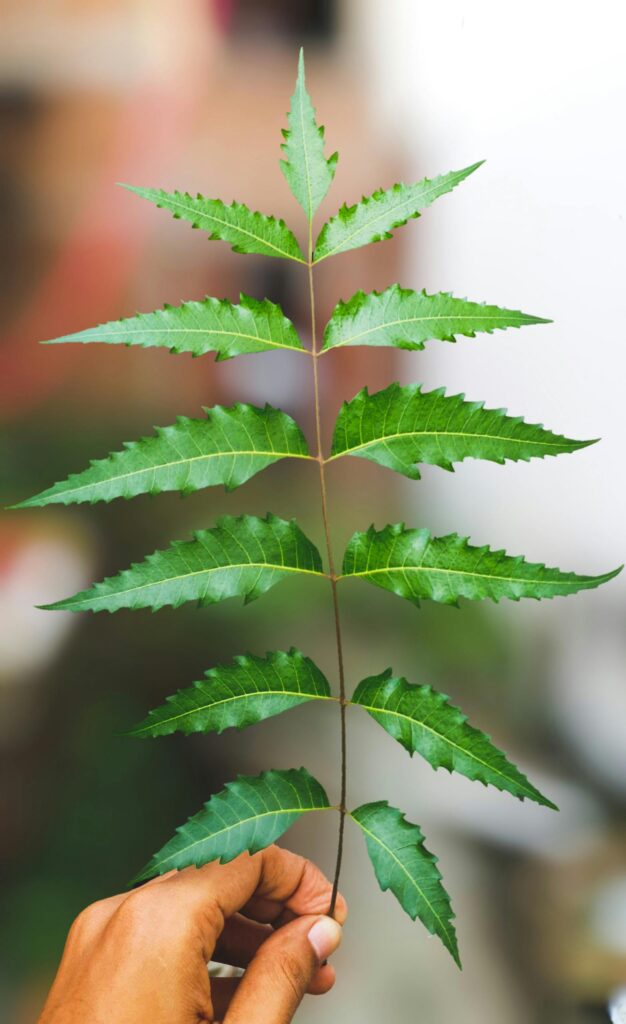
Benefits:
Neem is known for its antibacterial, antioxidants and anti-inflammatory properties, making it ideal for acne-prone skin. It helps to cleanse the skin, reducing the appearance of blemishes and promoting a clearer complexion.
How to Use:
– Neem Face Pack: Grind fresh neem leaves into a paste. Apply it to your face and leave it on for 20 minutes before rinsing off with lukewarm water.
Precautions
While neem is generally safe for most people, it’s essential to conduct a patch test before using any new product. Pregnant or nursing women should consult a healthcare professional before using neem in any form.
2. Turmeric
Turmeric, scientifically known as Curcuma longa, belonging to the ginger family. It is found in Southeast Asia and is grown commercially in that region, primarily in India. Its rhizome, or root, is ground into a bright yellow powder that contains a compound called curcumin, which is responsible for many of its health benefits.
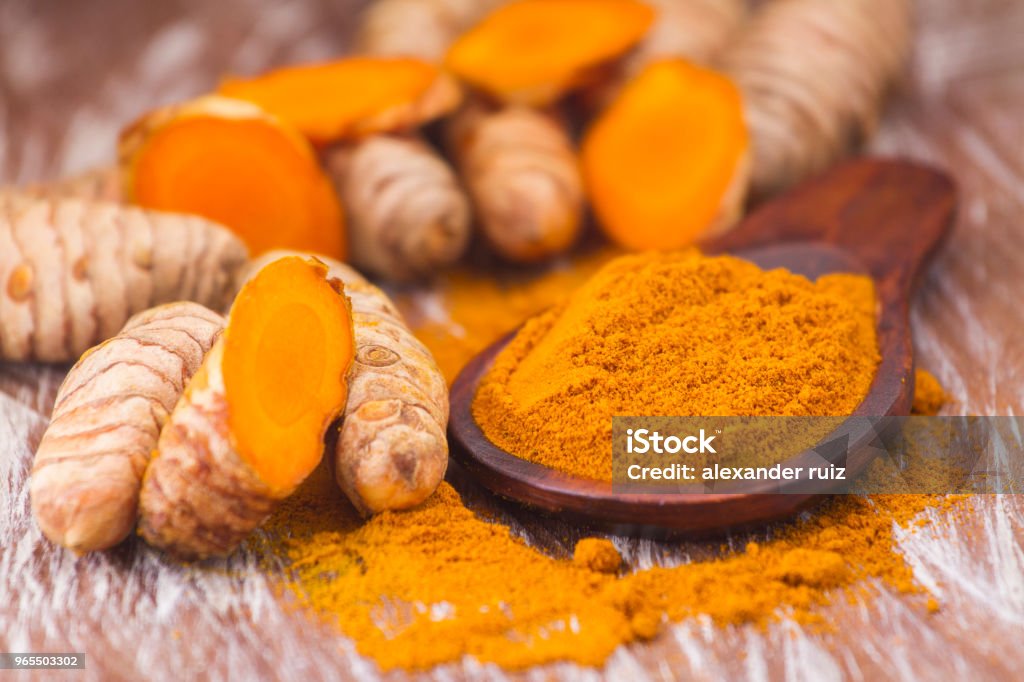
Benefits:
Turmeric contains curcumin, a potent antioxidant, antimicrobial properties with anti-inflammatory properties. It brightens the skin, reduce dark spots, and help to improve overall skin tone.
How to Use:
– Turmeric and Yogurt Mask: Mix one teaspoon of turmeric powder with two tablespoons of yogurt. Apply this mixture to your face and leave it for 10-15 minutes before washing it off.
Precautions
While turmeric is generally safe for most skin types, it can cause staining due to its intense colour. Always do a patch test before applying turmeric to your skin, especially if you have sensitive skin. If you experience any irritation, discontinue use.
3. Aloe Vera
Aloe vera is a tropical plant belonging to the lily family. The thick, fleshy leaves contain a clear gel that is rich in vitamins, minerals, enzymes, and amino acids. Known for its healing properties, aloe vera has been used in traditional medicine for centuries and is now a popular ingredient in various skincare products.
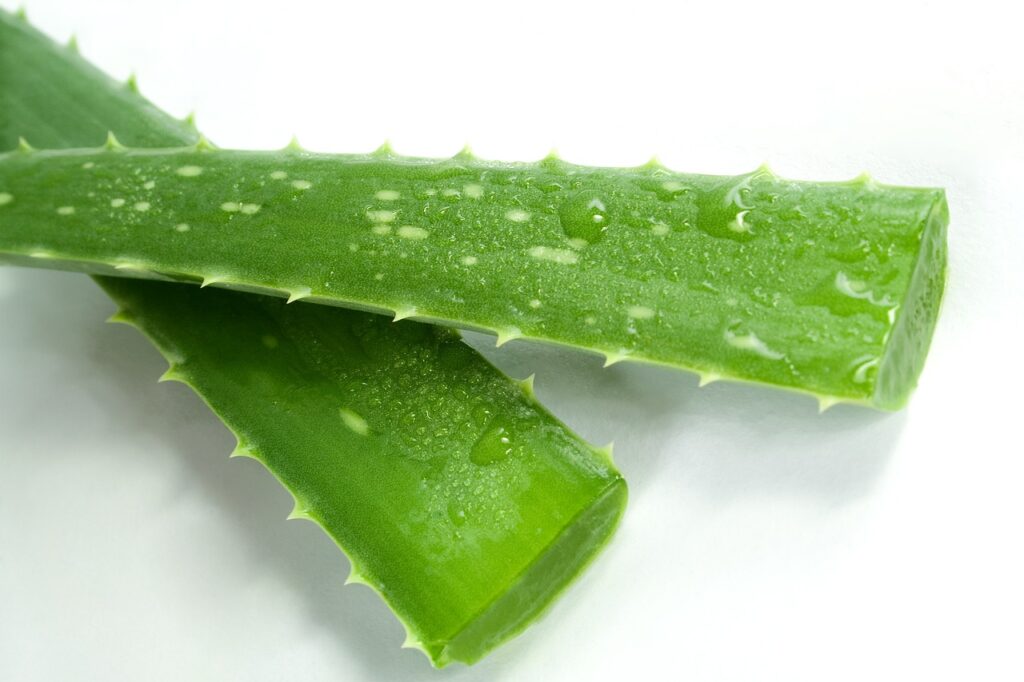
Benefits:
Aloe vera is famous for its soothing and moisturizing properties. It hydrates the skin. It helps to heal sunburns, scars, and other skin irritations, leading to a smoother complexion.
How to Use:
– Aloe Vera Gel: Simply extract fresh aloe vera gel from the leaves and apply it directly to your face. Leave it on overnight for best results.
Precautions
Aloe vera is generally safe for topical use, but it’s always wise to perform a patch test first. Stop use, if you found any irritation or allergic reactions. Additionally, consult a healthcare professional if you plan to use aloe vera internally.
4. Manjistha
Manjistha, known scientifically as Rubia cordifolia, is a perennial climbing plant used in Ayurvedic medicine for its various therapeutic properties. It is primarily recognized for its ability to purify the blood and enhance skin health.
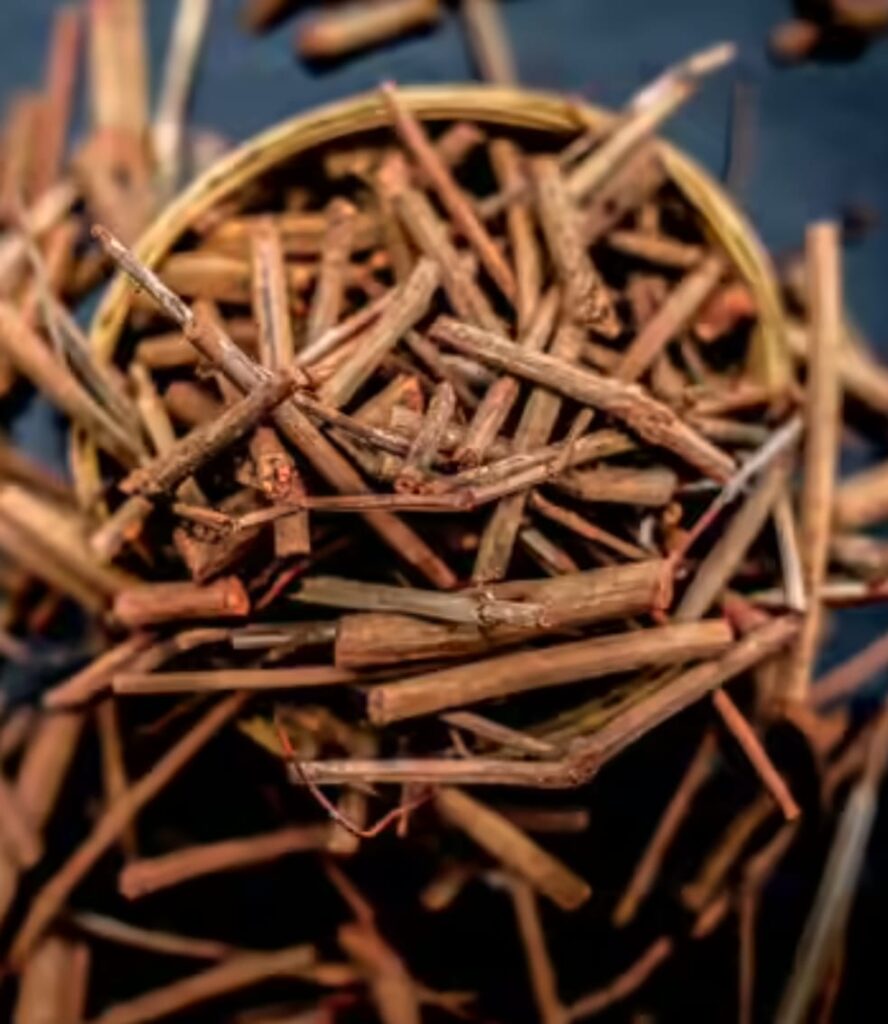
Benefits:
The primary active compounds in Manjistha include anthraquinones, such as rubiadin and munjistin, which are responsible for its colour and therapeutic effects. These compounds exhibit antioxidant, anti-inflammatory, and antimicrobial properties.
How to Use:
– Mix Manjistha powder with required water or rose water to form paste. Apply the paste on your face avoiding the eye area. Leave it on for about 10 minutes. Rinse with lukewarm water.
Precautions
Manjistha is generally safe for use, but it’s always a good idea to conduct a patch test before trying new products. If you have sensitive skin or are pregnant, consult with a healthcare professional before using Manjistha in any form.
5. Sandalwood
Sandalwood comes from the heartwood of the Santalum tree, which is primarily found in India, Australia, and the Pacific Islands. The most prized variety is Indian sandalwood (Santalum album), known for its high quality and aromatic properties. The essential oil extracted from sandalwood is highly valued not only for its fragrance but also for its various skin benefits.

Benefits:
Sandalwood has a cooling effect and is known for its ability to brighten the skin and reduce blemishes. It also provides a natural glow and helps to keep the skin youthful.
How to Use:
Sandalwood Face Pack: Mix sandalwood powder with rose water to form a paste. Apply it to your face and let it dry before rinsing off with warm water.
Precautions
Sandalwood is generally safe for most skin types, but it’s always a good idea to perform a patch test before using a new product. If you have sensitive skin or are pregnant, consult a healthcare professional before incorporating sandalwood into your regimen.
FAQ: 5 Natural Herbs for Skin Glow
1. What are the best natural herbs for achieving glowing skin?
The top five natural herbs for glowing skin are:
– Turmeric: Brightens skin and reduces blemishes.
– Neem: Cleanses and soothes acne-prone skin.
– Aloe Vera: Hydrates and heals, promoting a radiant complexion.
– Manjistha: Reduce hyperpigmentation, dark spots, and uneven skin tone.
– Sandalwood: Brightens skin tone and moisturizes dry areas.
2. How does turmeric benefit the skin?
Turmeric contains curcumin, which has anti-inflammatory and antioxidant properties. It helps brighten the skin, reduce dark spots, and prevent acne breakouts.
3. Can neem be used for all skin types?
Yes, neem is beneficial for all skin types. Its antibacterial properties make it especially effective for oily and acne-prone skin, while its soothing nature helps sensitive and dry skin.
4. How do I use aloe vera for glowing skin?
Fresh aloe vera gel can directly use on skin. Apply it as a moisturizer or as a soothing mask. For added benefits, mix it with honey or yogurt.
5. What are the skin benefits of manjistha?
Manjistha help to reduce hyperpigmentation, dark spots, and uneven skin tone, promoting a more radiant and uniform complexion.
6. How can I incorporate sandalwood into my skincare routine?
You can mix sandalwood powder with water or rose water to create a paste for a face mask. Alternatively, look for soaps or creams that contain sandalwood for regular use.
7. Are there any side effects of using these herbs?
Most of these herbs are safe for topical use, but it’s important to do a patch test first. Some individuals may experience allergic reactions or irritation, especially with turmeric and neem.
8. How often should I use these herbs for the best results?
For optimal results, incorporate these herbs into your routine 1-2 times a week, depending on your skin type and sensitivity. Consistency is key to achieving glowing skin.
9. Can these herbs be combined for better results?
Yes, combining herbs can enhance their benefits. For example, a mask with turmeric, neem, and aloe vera can provide a potent treatment for glowing skin while addressing multiple concerns.
10. Where can I find these herbs?
Most of these herbs can be found at health food stores, herbal shops, or online. Fresh ingredients like aloe vera can be grown at home, while powders can be purchased for easy use.
Conclusion
Incorporating these natural herbs into your skincare routine can enhance your skin’s radiance and appearance. Remember to do a patch test before trying any new ingredient, and consult with a skincare professional if you have specific concerns. Feel free to explore these natural herbs and enjoy their benefits for achieving a radiant complexion!
Reference
Fakhrudin, N., Azam, M., Mollah, M. N. H., & Das, S. (2021). Neem (Azadirachta indica A. Juss) and its therapeutic applications: A comprehensive review. Journal of Pharmacy and Bioallied Sciences, 13(1), 1-14. https://doi.org/10.4103/jpbs.JPBS_204_20
National Center for Complementary and Integrative Health. (n.d.). Turmeric. U.S. Department of Health and Human Services. Retrieved September 19, 2024, from https://www.nccih.nih.gov/health/turmeric
Tiwari, P., & Tiwari, M. (2016). Efficacy of turmeric in improving skin health: A systematic review. Journal of Clinical and Aesthetic Dermatology, 9(3), 42-48. Retrieved from https://pubmed.ncbi.nlm.nih.gov/27213821/
Surjushe, A., Vasani, R., & Sapl, D. G. (2008). Aloe vera: A short review. Indian Journal of Dermatology, 53(4), 163–166. https://doi.org/10.4103/0019-5154.44785
Kerala Ayurveda. (n.d.). Manjistha: The blood purifier and skin healer. Retrieved September 19, 2024, from https://www.keralaayurveda.biz/blog/manjistha?srsltid=AfmBOooK4utyjpreQ34WBXmK1K7Rw0hr2RqAzEYp-_AXlGswaFKLHDNQ
Indian Council of Forestry Research and Education. (n.d.). SIS: Scientific Information System. Retrieved from https://iwst.icfre.gov.in/database/SIS/index.html
